We’ve become expert archivists of our lives after dark. At nightclub entrances and dotted across our dancfloors are clusters of partygoers huddling to snap that essential Selfie. A big night out is an exercise in self-curation — the clothes, the music, the crew, the venue – each serving as raw materials in our imagining of the space and our place in it. The imagery is then methodically logged on Instagram, Facebook, Twitter or Snapchat: a clublife catalogue, a recreation record.
Recently I was offered a rare glimpse into a party archive, recorded and documented before the social media take-off, before our night lives were exploded into a kaleidescope of online albums. The catalogue belonged to fashion designer and DJ, David West, who in the years 2006— 2008 facilitated a series of Cape Town-based parties called Nu-Flex.
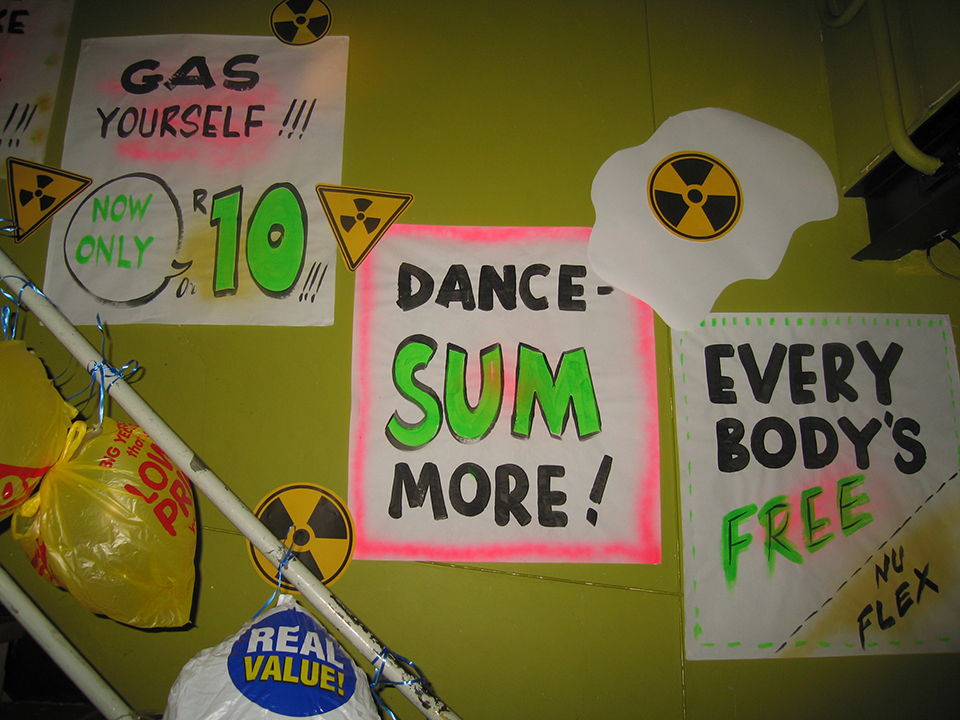
Nu-Flex emerged in conversation with Nu-Rave: a wistful wave of post-punk and acid house, which hit the UK/European club scene in the mid-2000s, draped in UV glitter, glow-sticks and neon skinny jeans. Nu-Rave sought to re-interpret and revitalise 90s Rave Culture: ‘The likes of BoomBox and other club nights in London, where dressing up was a thing’, David explains. BoomBox offered a spectacular collision of fashion and music — novel for its time. Partygoers revelled in the shambolic dress-up, mingling with many of London’s fashion heavyweights. Relatively short-lived, Nu-Rave served as a passing moment of ephemeral euphoria. It came and left, leaving in its wake a dazzling debris of bold prints and lime-stained nostalgia. The novelty had a life-span, David said. ‘It’s better to burn bright than burn out’.
Back in the mid 2000s, Nu-Flex partygoers would amass on a more-or-less bi-monthly basis at Disko-K in Cape Town’s CBD. Today, Loop Street is a popular night-time destination. But at the time, this was ‘a part of town that nobody ever went to. Sailors came in for drinks while docked in the nearby harbour’. Disko K, which no longer exists, ‘had the most ridiculous sound and light set-up and it had kareoke.’
The Nu-Flex crowd included droves of students, interspersed with an older group who had lived through rave’s first wave. ‘We did also have lots of visitors from Johannesburg and yes – some kids used to travel in from Wellington and Worcester to be there’.
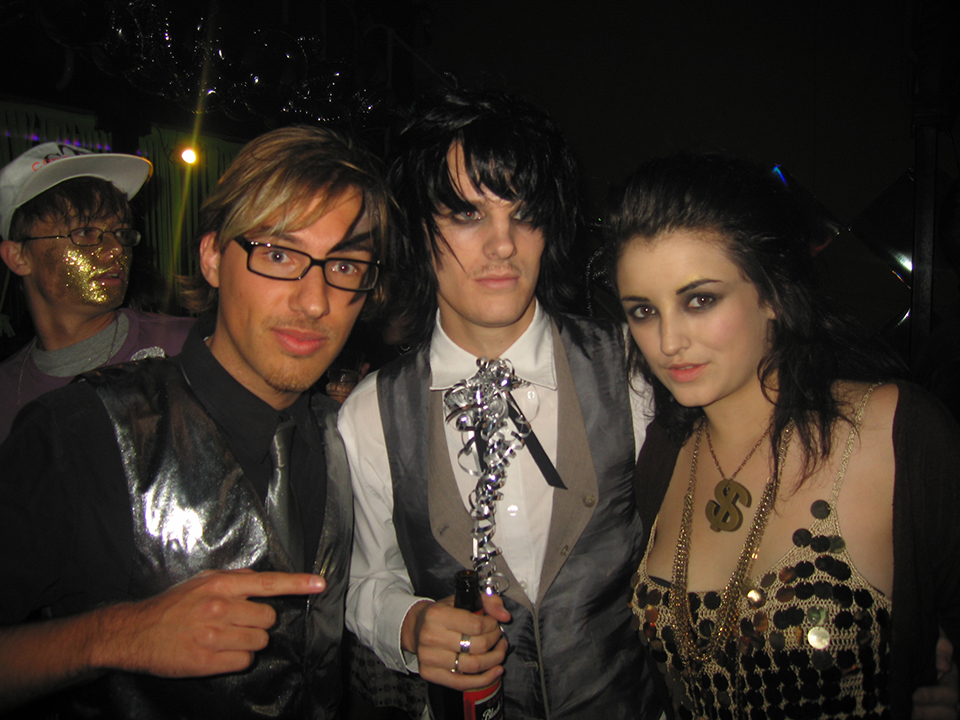
Nu-Flex was draped in audacious colour. But David concedes that the scene was predominantly white. Not much has changed about Cape Town since, he added. Contributing to the narrow demographic were the limitations of David’s own audience. The Nu-Flex crowd, he explained, was often an off-shoot of Evol, an edgy divebar, which David also ran and describes as having been ‘very white’. In a time before social media, news of Nu-Flex travelled by word-of-mouth. This gave it an ‘underground cool’, but also entrenched forms of exclusion. Perhaps there’s something to be said about the relationship between rapid-fire-tweets and the democratisation of dancefloors.
Nu-Flex parties were heavily themed, encouraging partygoers to be daring in their outfits. Drugged-up Spring themes included: Tropi-core, Optikamax, Antihistaflex. Add to the mix the metallic Hyper Go-Go and the garbage-glam-themed Gutta-Flex. The time of Indie boys dressed in black-and-white, eyes cloaked in mascara, had peaked, giving way to an exuberant and colour-crazed fashion revival. All across town, partygoers would gather for the ‘Pre-Flex’, revelling in the act of ‘getting ready’.
Rather than the mucho masculinity commonly associated with nightclub bouncers, Nu-Flex had a ‘Door Queen’, with drag being an essential component of the party aesthetic. ‘I hired a make-up artist to style my friend Andrew (who had done loads of drag in the past)’. The Door Queen screened partygoers’ attire as they entered, commenting on their lack of effort or offering compliments to those who had come out in style. ‘The gay scene had already become very bland and hetero-normative, so I was hell bent on encouraging the queerness of the party’. For David, Nu-Flex would have been incomplete without a Drag Queen on the decks, so he made it a point to learn drag himself.
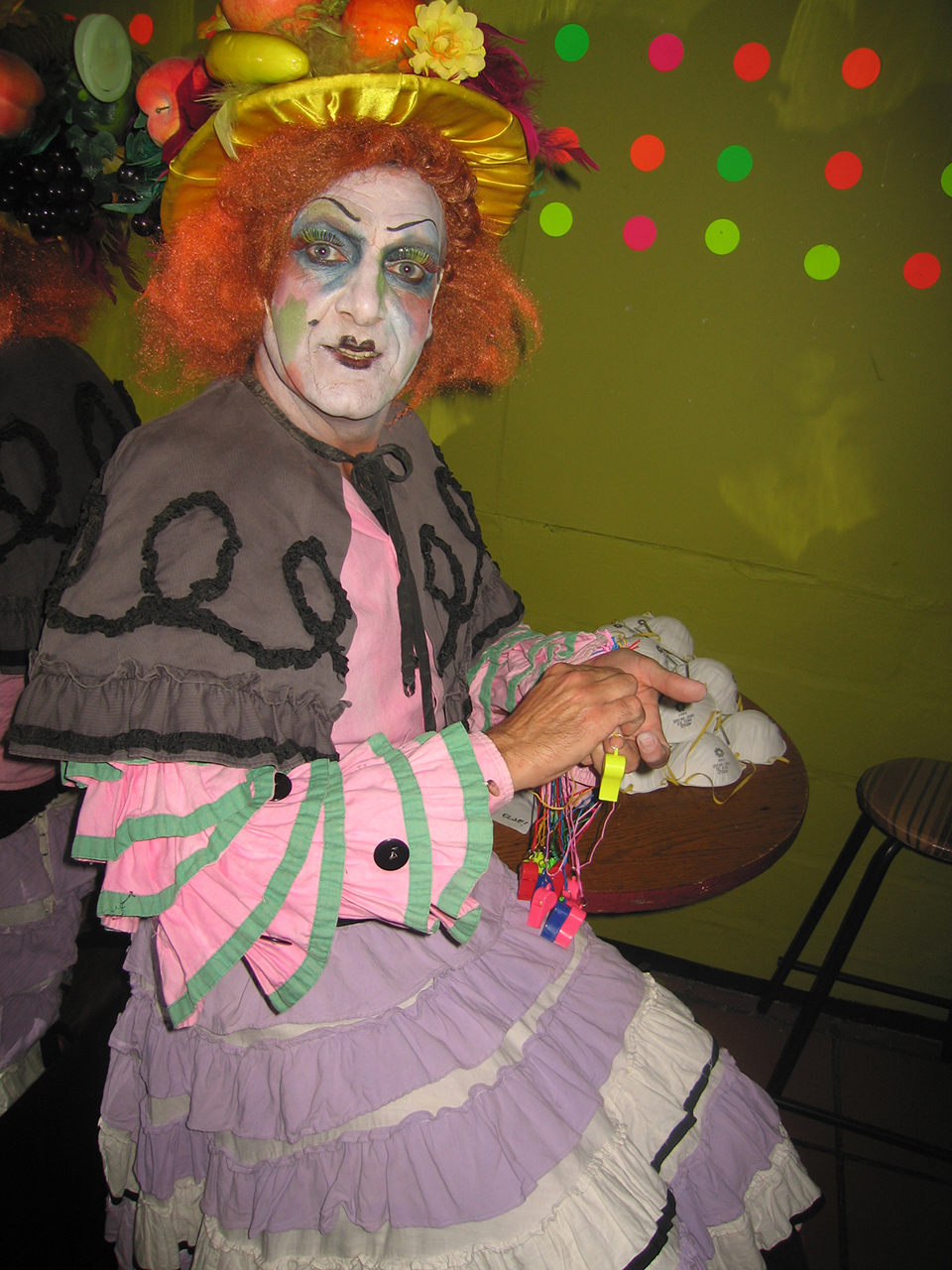
‘I was a club kid. I was schooled in aesthetics in the 90’s at Rave and House clubs’. Both as a fashion designer and party planner, David’s muse was club culture. ‘It’s been a huge part of my life and allowed me to contribute to the city culturally over time’.
Reflecting on Nu-Flex, he said: ‘I was desperate for something bright, fabulous, happy and over the top. I remember one night, I had a net full of silver-foil balloons released from the balcony at the peak of my DJ set. Just for the drama’. This was a celebration of excess: reflected in eccentric décor and dress, in being encompassed by a 303 synthesiser, in losing oneself in Nitris Oxide or psychadelics, and finally leaving the club in a 4am haze. ‘You danced so hard, it was more like a flex’. Alongside David himself, DJs included Pierre Estienne, Dario Leite (the Midnight Men), Gazelle and Bradley Abraham. Spoek Matambo and Marcus Wormstorm would perform as Sweat X. ‘Most were old enough to have had experienced the early 90s to some degree’.
Nineties nostalgia continues to hold weight among South African millenials, with much of our aesthetics harking back to the technicolour of a post-94 transition. It’s evident when we drop a TKZee lyric , or rock a Spice Girl choker, or revel in Brenda Fassie bubblegum.
‘I think many of the kids today appreciate the cheese factor of the nineties sound’, David says, ‘like Venga Boys or Crystal Waters. But they can’t handle actual rave and acid house. There seems to be a need to be able to attach irony to something for it to be enjoyable today. Do I sound old? I guess I’m waiting for something to emerge that sounds as new as House/Rave/Techno did in the 90s. And then of course, when a scene emerges around that, I think that will be thrilling’.
David yearns for the club cultures of old:
‘Nightclubs should be places of self expression and freedom, a fantasy world even. I am saddened by the clubs (or lack of them) today. Where’s the pizzazz? Where has the spirit of rebellion and non-conformity gone? Why is it all about mainstream pop music today? What happened to the underground or alternative?’
There’s no definitive answer. But if I were to go in search of one, I would ask the gqom artists playing new mixtapes out their car boots in Durban. Or the crew gathered in a courtyard to hear the latest electronica from a friend’s home studio. Or the audiences that galvanise sonically and politically around FAKA and Angel Ho. When it comes to contemporary cultural production in South Africa, I am full of that old-school, pink-glazed, neon-clad idealism, with which David would be very familiar. I see young people delight in the experimental, perhaps with less of an inclination to pursue escapist bliss. Stylistically, politically and musically, we are increasingly inclined to disrupt. But we also see the importance of giving disruption mass appeal and mobilizing for inclusivity. Like David, I believe the emerging scene will be thrilling — pumped with a powerful mix of critical nostalgia and uncompromising futurism, an unhinged blend of radio-hit consumability and radical resistance.
The Nu-Flex catalogue teaches us to pay attention to our party archives: as testaments to a generation imagining, wrestling, searching…
The Posters
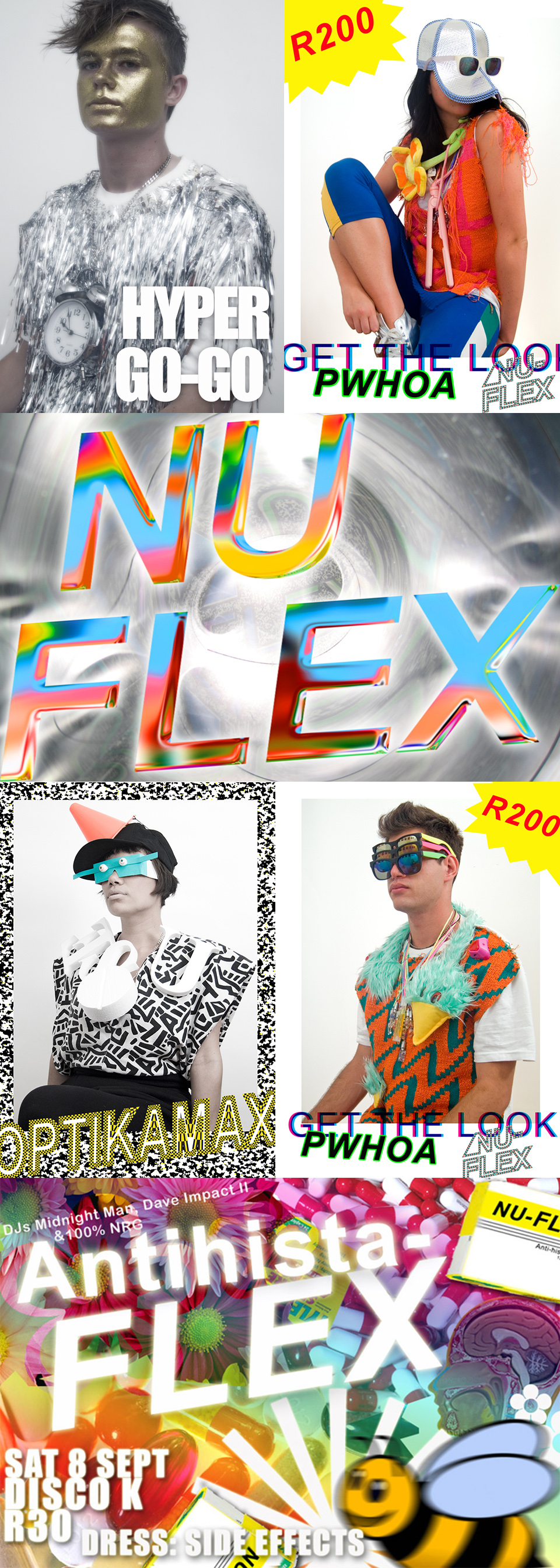
The Decor
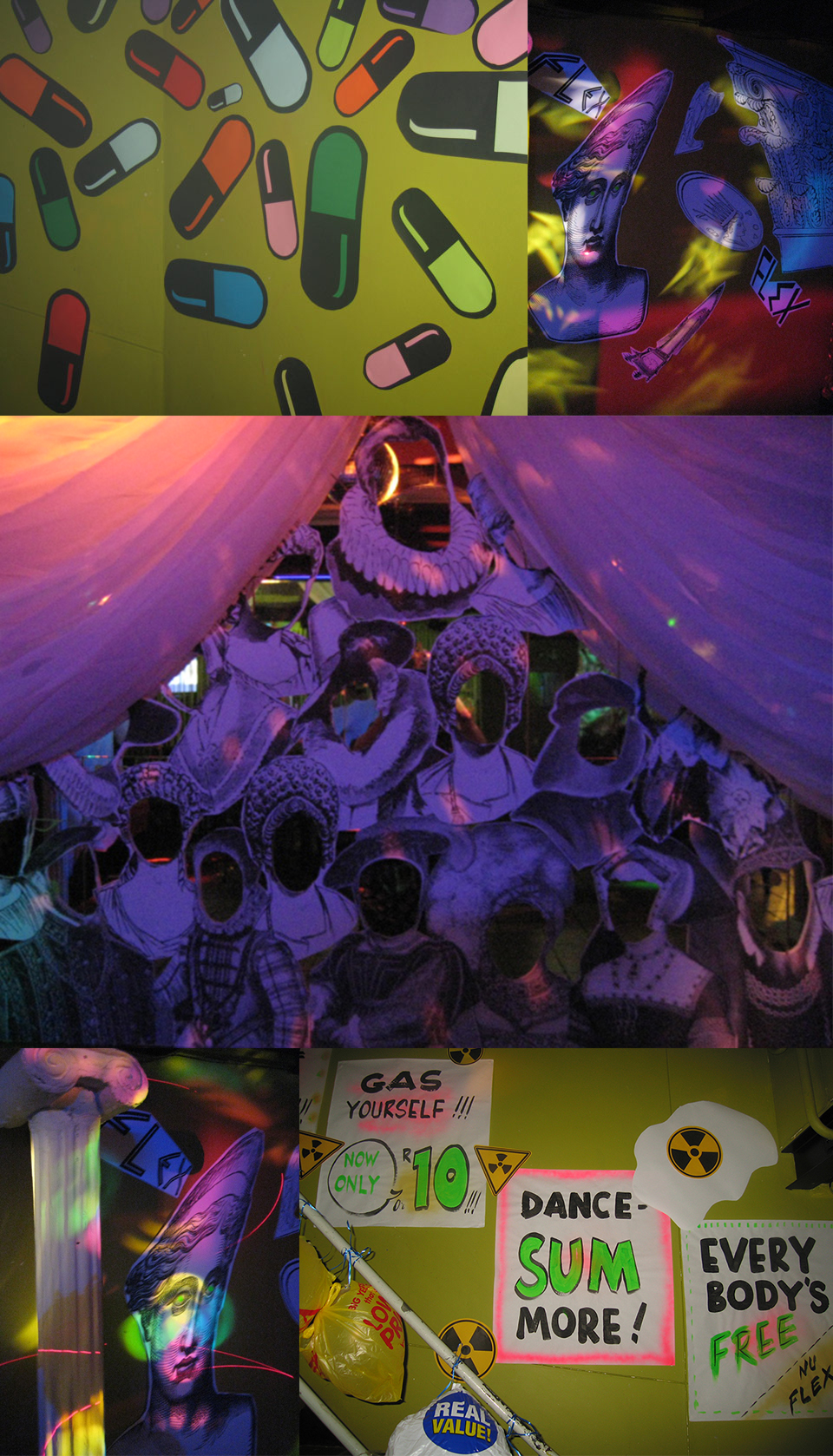
The Door Queen
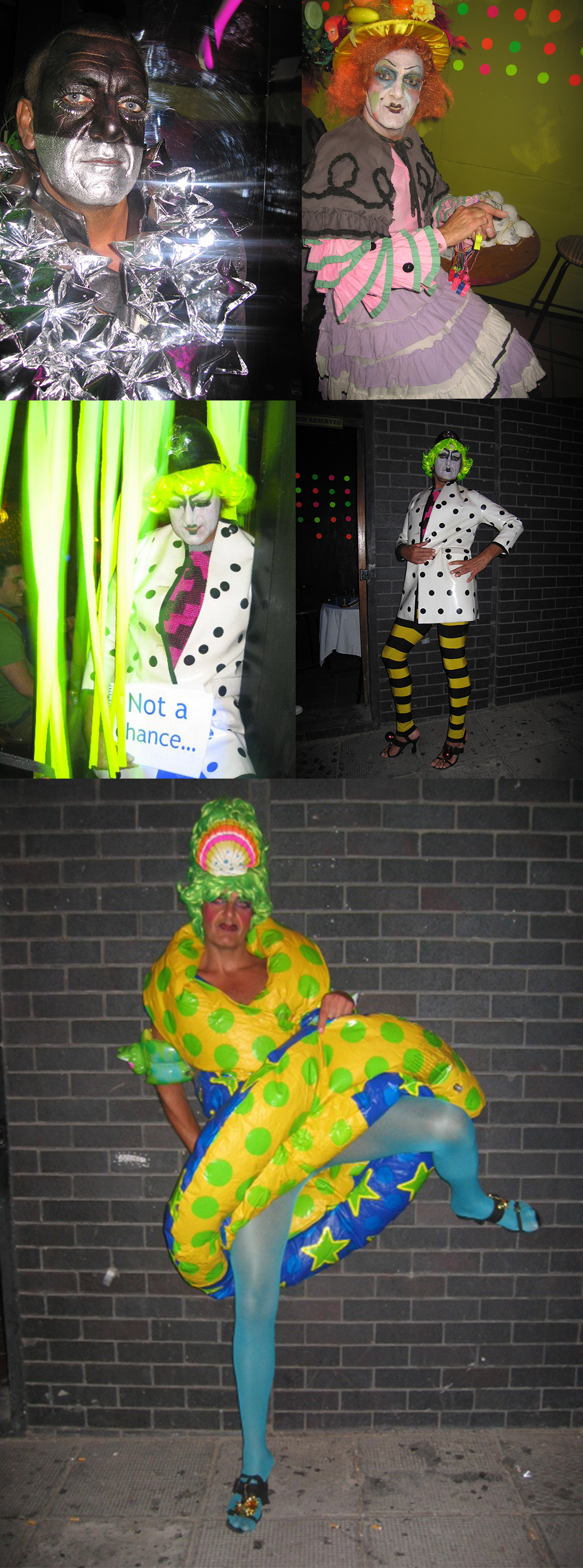
The Kids




















































